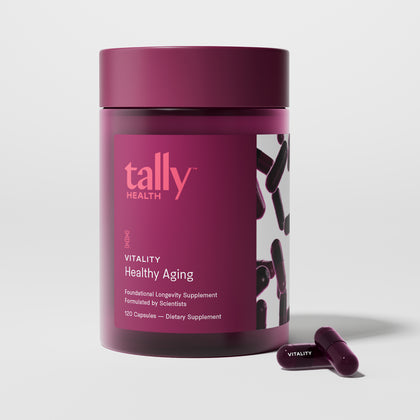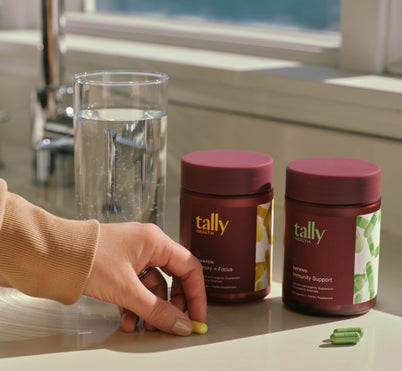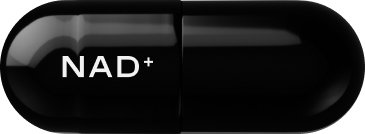

TL;DR: Aging is the single strongest risk factor for most chronic diseases, but whether aging itself should be labeled a disease is still hotly contested.
Biology has made aspects of aging measurable and modifiable (think: the 12 hallmarks of aging and next-generation epigenetic aging clocks), but regulators still don’t recognize “aging” as an indication . International classification systems like the ICD play a key role in standardizing disease diagnosis worldwide and influence whether aging is officially recognized as a disease.
A growing “geroscience” middle ground argues we don’t need to win the semantics war; we need frameworks and endpoints to target the biology that drives multiple diseases at once.
Regardless of where you land philosophically, the same practical, science-backed levers (sleep, fitness, diet quality, protein sufficiency, social connection, etc.) robustly support healthy aging today.
What are we *actually* arguing about?

The core problem: “Disease” typically implies a deviation from normal physiology with specific etiology, diagnostic criteria, and treatability. But everyone ages. Some scholars argue that classifying aging as a disease pathologizes a universal process and risks ageism , while others counter that a disease label would unlock regulatory pathways and resources to treat its root biology. The so-called aging disease dichotomy is increasingly seen as a false distinction, since aging involves accumulative pathologies similar to those found in recognized diseases. Many experts argue that aging appropriately fits within the disease classification framework because it shares features with established disease processes.
Regulatory reality check: The WHO explicitly clarifies that “old age” is not classified as a disease in ICD‑11 , and the U.S. FDA does not accept “aging” as an indication . This is a major reason trials like TAME (Targeting Aging with Metformin) are designed around multimorbidity and delay of age-related diseases, rather than “treating aging” per se. The debate over whether aging should be seen as a disease process continues to shape research and regulatory approaches.
From Inevitable Decline to Treatable Biology: The 12 Hallmarks of the Aging Process

In 2013, López‑Otín and colleagues crystallized aging biology into 9 “hallmarks of aging.” In 2023, this framework expanded to include 12 hallmarks, reflecting a decade of mechanistic discovery.
These hallmarks represent key biological mechanisms and underlying processes that drive the aging process and are central to understanding the complex aging processes in humans. The hallmarks (e.g., genomic instability, epigenetic alterations, mitochondrial dysfunction, cellular senescence, altered intercellular communication, etc.) give us druggable targets and testable hypotheses.
Disruptions in the cell cycle (relevant to genomic instability) and stem cell exhaustion are included among these hallmarks, highlighting the importance of stem cells in tissue regeneration and the decline in regenerative capacity with age. Oxidative stress and the accumulation of reactive oxygen species contribute to molecular damage, while damaged mitochondria are recognized as a hallmark of aging and a key factor in age-related diseases. Enhanced stress resistance is associated with boosted longevity in certain model organisms, such as nematodes and mice, providing insights into mechanisms of lifespan extension. As the hallmarks framework has expanded, metabolic disorders are increasingly recognized as integral to the aging processes, linking metabolic imbalances to age-related pathologies.
Meanwhile, epigenetic clocks and related EpiScores have matured from conceptual biomarkers to tools with growing predictive validity for morbidity, mortality, and functional decline. Still, their qualification as regulatory surrogate endpoints remains an open question, and different clocks capture different (sometimes complementary) biological signals.

If Aging Drives Most Age Related Diseases, Shouldn’t We Treat It?
Arguments from the pro side: The case for calling aging a disease
Aging is the dominant, shared driver of most chronic diseases; targeting it is maximally efficient. Aging is not a benign progression, but a process that leads to functional decline and increased risk of aging related and age related diseases, which can be targeted by medical interventions.
A disease label could unlock regulatory pathways and reimbursement models, accelerating geroprotective trials and biomarker qualification. It would also accelerate research and developing treatment, including precision medicine interventions and regenerative medicine, to address the underlying mechanisms of aging and aging related diseases.
Classifying aging as a disease creates incentives for earlier, preventive interventions , potentially generating massive economic and public health returns. This could promote the development and funding of biomedical procedures and regenerative medicines, supporting medical research with a clearer focus on aging related and age related diseases. Such interventions could help treat aging and potentially even lead to curing aging.
Healthy Aging Without the Disease Label
The case against calling aging a disease | Counterarguments include:
Ageism & stigma: Pathologizing a universal process could worsen age-based discrimination and medical undertreatment (“that’s just old age”). Many experts argue that aging is a natural process, or a collection of natural processes, and is not a disease. For many, aging is seen as a benign progression rather than a pathological state.
Heterogeneity: Aging is highly individualized and multicausal , challenging the standard disease model that favors clear etiologies and diagnostic thresholds . A person's age does not necessarily determine health status; while chronic illnesses are common in older age, they are not universal, and many individuals remain healthy and active.
Healthy aging exists: Many older adults maintain high function and resilience; calling them “diseased” may conflict with public health frameworks that emphasize capability, well being, and functional capacity in older age.
Policy Over Semantics: Build Endpoints, Not Headlines

The geroscience hypothesis says: targeting fundamental aging biology will delay or prevent multiple age-related diseases simultaneously —whether or not we call aging a disease. As the world's population ages, countries face major challenges adapting their health and social systems to meet the needs of older adults. This approach is gaining traction:
TAME uses time-to-multimorbidity as a primary endpoint.
Senolytics, first in mice and now in early human studies, indicate we can selectively remove senescent cells and potentially improve function.
Next-generation epigenetic clocks and other composite biomarkers are being tested as trial endpoints to speed discovery—though validation and standardization remain essential.
Primary health services and person-centered integrated care are essential for supporting healthy aging, ensuring that care is tailored to individual needs and integrated across health and social systems. There is also a critical need for equitable access to end of life care, particularly in middle income countries where disparities in healthcare and social support are pronounced.
Bottom line: advancing regulatory science, endpoint validation, and trial design may do more to help people than winning a philosophical argument about labels. Policy approaches should also recognize that early life factors can shape aging trajectories, highlighting the importance of integrated strategies across the lifespan to address major challenges posed by demographic shifts.
Equity, economics, and ethics: why framing matters
An aging population is pushing already strained health systems to the brink. As the world's population grows older, countries face major challenges in adapting their health and social systems to support older adults. Healthy aging delivers large economic value via extended productivity, reduced dependency, and decreased healthcare utilization. But without equitable access to diagnostics, prevention, gerotherapeutics, and end of life care—especially in middle income countries— longevity gains could widen health disparities. Any policy path—disease label or not—must integrate equity, affordability, and public health perspectives, and prioritize person centred integrated care and robust primary health services.
Science-backed tips to support healthy aging

Move—enough, and often. Adults should accumulate 150–300 minutes/week of moderate aerobic activity or 75–150 minutes of vigorous activity, plus muscle-strengthening ≥2 days/week. Cardiorespiratory fitness is a powerful, dose-responsive predictor of mortality.
Sleep at least 7 hours/night (most adults). Short sleep is linked to metabolic, cardiovascular, cognitive, and immune dysfunction.
Get enough protein—especially after age 65. Aim for ~1.0–1.2 g/kg/day, higher with illness or intensive training, to counter anabolic resistance and sarcopenia.
Eat a high-quality dietary pattern (e.g., Mediterranean-style, rich in plants, extra-virgin olive oil, nuts, and fish) to reduce cardiometabolic risk.
Train your VO₂ max and grip strength. Add 1–2 weekly sessions of higher-intensity intervals (scaled to your fitness and medical status) to raise aerobic capacity— one of the most potent predictors of survival.
Maintain (or build) social connection. Strong social relationships confer a ~50% higher likelihood of survival —an effect size comparable to major biomedical risk factors.
Target geroscience hallmarks. Interventions such as exercise that modulate chronic inflammation, mitochondrial function, nutrient sensing, or epigenetic state are promising.
Don’t Let Semantics Slow Aging Research

Whether you call aging a disease, syndrome, or driver of disease, the mission is the same : Develop, validate, and deploy interventions that extend healthy, high-functioning years for everyone. Let’s build the regulatory science, biomarkers, and trial designs that make that possible—while framing aging in a way that avoids stigma and centers autonomy, equity, and dignity.
Organizations such as the American Medical Association play a significant role in shaping disease classification, as seen in their recognition of obesity as a disease, which influences research funding and healthcare policy. Global health bodies like the World Health Organization are also working to standardize disease diagnosis worldwide, ensuring consistent terminology and approaches in international health protocols.
Transparency about commercial or financial relationships is essential in aging research and policy to maintain objectivity and public trust.
Vitality by Tally Health: A Science-Backed Ally for Healthy Aging

Vitality by Tally Health is formulated to support your body’s natural defenses against age-related decline by targeting key biological pathways linked to aging.
Featuring the powerful ingredients Calcium Alpha-Ketoglutarate (1000mg), Quercetin (500mg), Trans-Resveratrol (500mg), Fisetin (100mg), and Spermidine (900mcg), Vitality works synergistically to promote cellular health and target aging hallmarks.
Backed by cutting-edge research and designed for daily use, Vitality is an excellent companion in your journey toward healthy aging.
What is the main debate about aging being classified as a disease?
The core problem is that “disease” typically implies a deviation from normal physiology with specific etiology, diagnostic criteria, and treatability—but everyone ages. Some scholars argue that classifying aging as a disease pathologizes a universal process and risks ageism, while others counter that a disease label would unlock regulatory pathways and resources to treat its root biology.
What are the 12 hallmarks of aging and why do they matter?
These hallmarks represent key biological mechanisms and underlying processes that drive the aging process and are central to understanding the complex aging processes in humans. They give us druggable targets and testable hypotheses, linking biological disruptions like genomic instability, mitochondrial dysfunction, and cellular senescence to age-related decline.
What is the geroscience approach to aging?
The geroscience hypothesis says: targeting fundamental aging biology will delay or prevent multiple age-related diseases simultaneously—whether or not we call aging a disease. This approach focuses on endpoint validation, biomarker development, and interventions like senolytics or exercise that modulate core aging pathways.
Recommended Supplements
Citations
[1] Yoshino J, Baur JA, Imai S. NAD+ intermediates: the biology and therapeutic potential of NMN and NR. Cell Metab. 2018 Feb 6;27(2):513-528. doi:10.1016/j.cmet.2017.11.002. PMID: 29249687.
[2] Rajman L, Chwalek K, Sinclair DA. Therapeutic potential of NAD-boosting molecules: the in vivo evidence. Cell Metab. 2018 Mar 6;27(3):529-547. doi:10.1016/j.cmet.2018.02.011. PMID: 29514067.
[3] Lautrup S, et al. NAD+ in Brain Aging and Neurodegenerative Disorders. Cell Metab. 2019 Feb 5;29(2):630-655. doi:10.1016/j.cmet.2019.01.008. PMID: 30735634.
[4] Bogan KL, Brenner C. Nicotinic acid, niacinamide, and nicotinamide riboside: a molecular evaluation of NAD+ precursor vitamins in human nutrition. Annu Rev Nutr. 2008;28:115-130. doi:10.1146/annurev.nutr.28.061807.155443. PMID: 18429699.
[5] Elhassan YS, et al. Nicotinamide Riboside Augments the Aged Human Skeletal Muscle NAD+ Metabolome and Induces Transcriptomic and Anti-inflammatory Signatures. Cell Reports. 2019;28(7):1717–1728.e6. doi:10.1016/j.celrep.2019.07.043. PMID: 31412238.
[6] Martens CR, et al. Chronic nicotinamide riboside supplementation is well-tolerated and elevates NAD+ in healthy middle-aged and older adults. Nat Commun. 2018 Mar 29;9(1):1286. doi:10.1038/s41467-018-03421-7. PMID: 29593260.
[7] Irie J, et al. Effect of oral administration of nicotinamide mononucleotide on clinical parameters and nicotinamide metabolite levels in healthy Japanese men. Endocr J. 2020;67(2):153–160. doi:10.1507/endocrj.EJ19-0313. PMID: 31792986.
[8] Knip M, Douek IF, Moore WP, et al. Safety of high-dose nicotinamide: a review. Diabetologia. 2000;43(11):1337-1345. doi:10.1007/s001250051560. PMID: 11079727.











